Parents, teachers, and children gave us a “tall” order when they asked for some giraffe facts for kids. Though this challenge will “stretch” us a bit, you will come out “head and shoulders above” those who skipped this lesson.
All puns aside, giraffes are fascinating animals. Naturally-curious children are immediately drawn to the giraffe’s unique build. Everything from its head to its hooves sparks wonderment. Its 2 hairy horns, black tongue, long neck, spotted coat, swishy tail, and spindly legs are just so interesting.
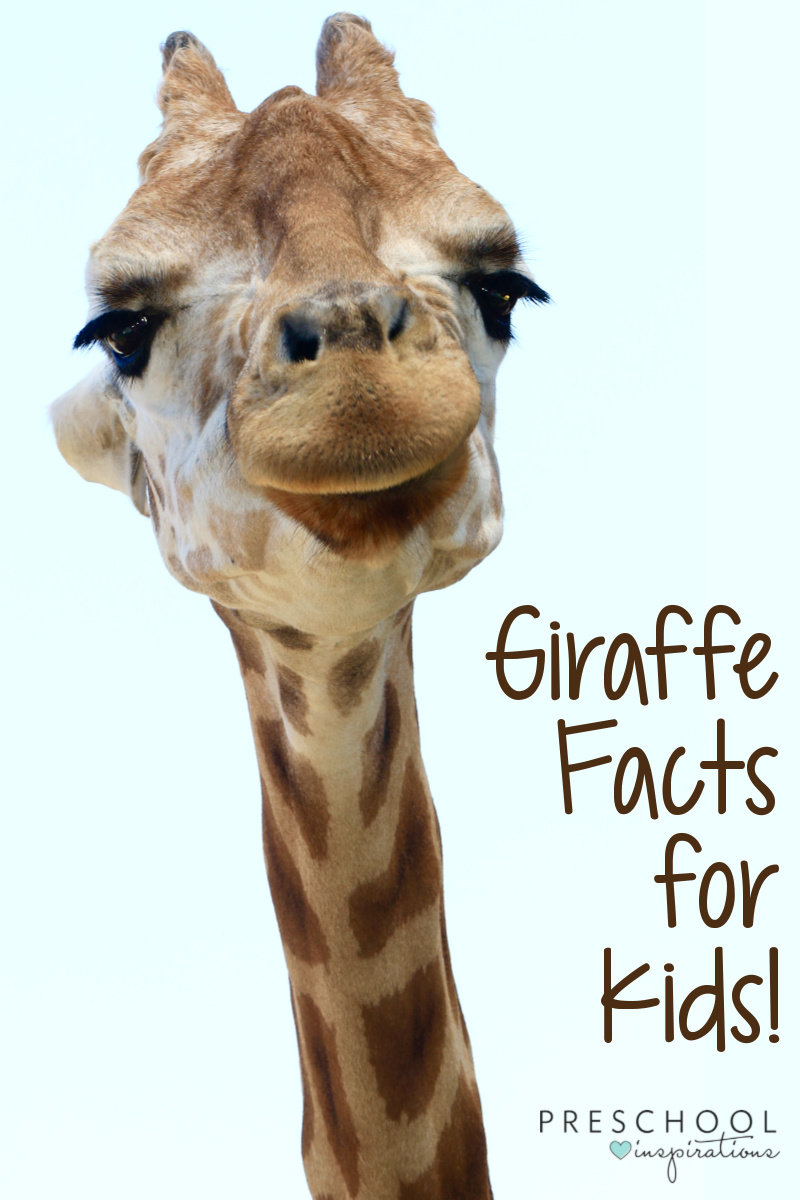

Giraffe Facts for Kids
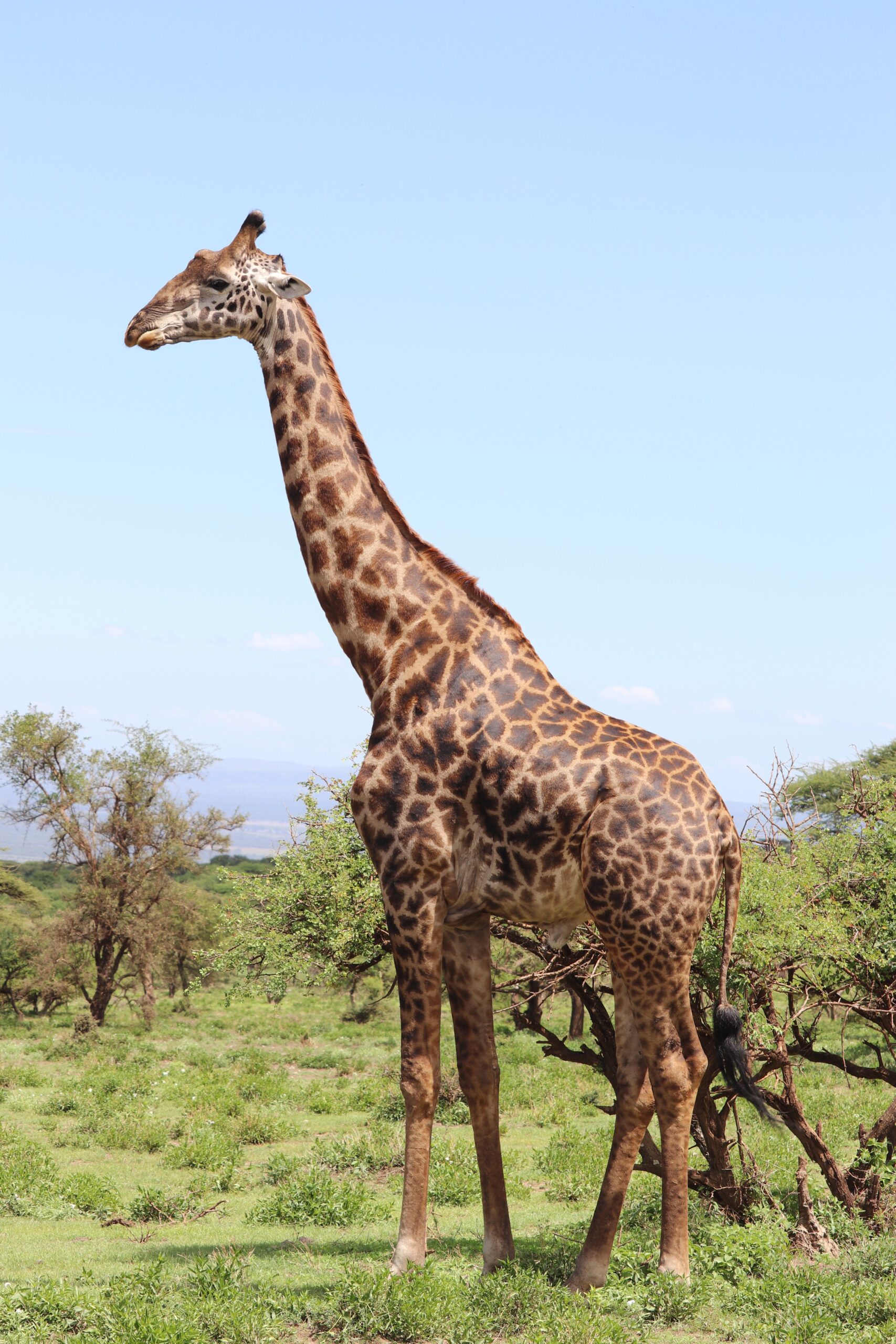
Giraffes are herbivores (plant-eaters) and typically eat up to 75 pounds of food in a day. Their favorite food? Leaves from the tops of acacia trees. Giraffes also get most of the water that they need from these leaves.
Giraffes spend 16 or more hours per day eating and traveling to find food.
Their height and keen eyesight let them see for long distances – perfect for finding food or detecting a hungry lion.
Giraffes only need to stop at watering holes once every few days for water. The watering hole is dangerous for a giraffe. They have to bend down awkwardly, and this makes them an easy target for a patient lion or crocodile.
Giraffes only sleep about 20 minutes each day, mostly through power naps that last only a few minutes each. They sleep standing up, and there’s usually another giraffe on guard to alert others of danger.
Giraffes can sprint (run in short bursts) at speeds of 35 miles per hour. This allows them to flee quickly from predators (animals who want to eat them).
The giraffe’s large size and strong, hooved feet are great defenses.
Baby Giraffe Facts
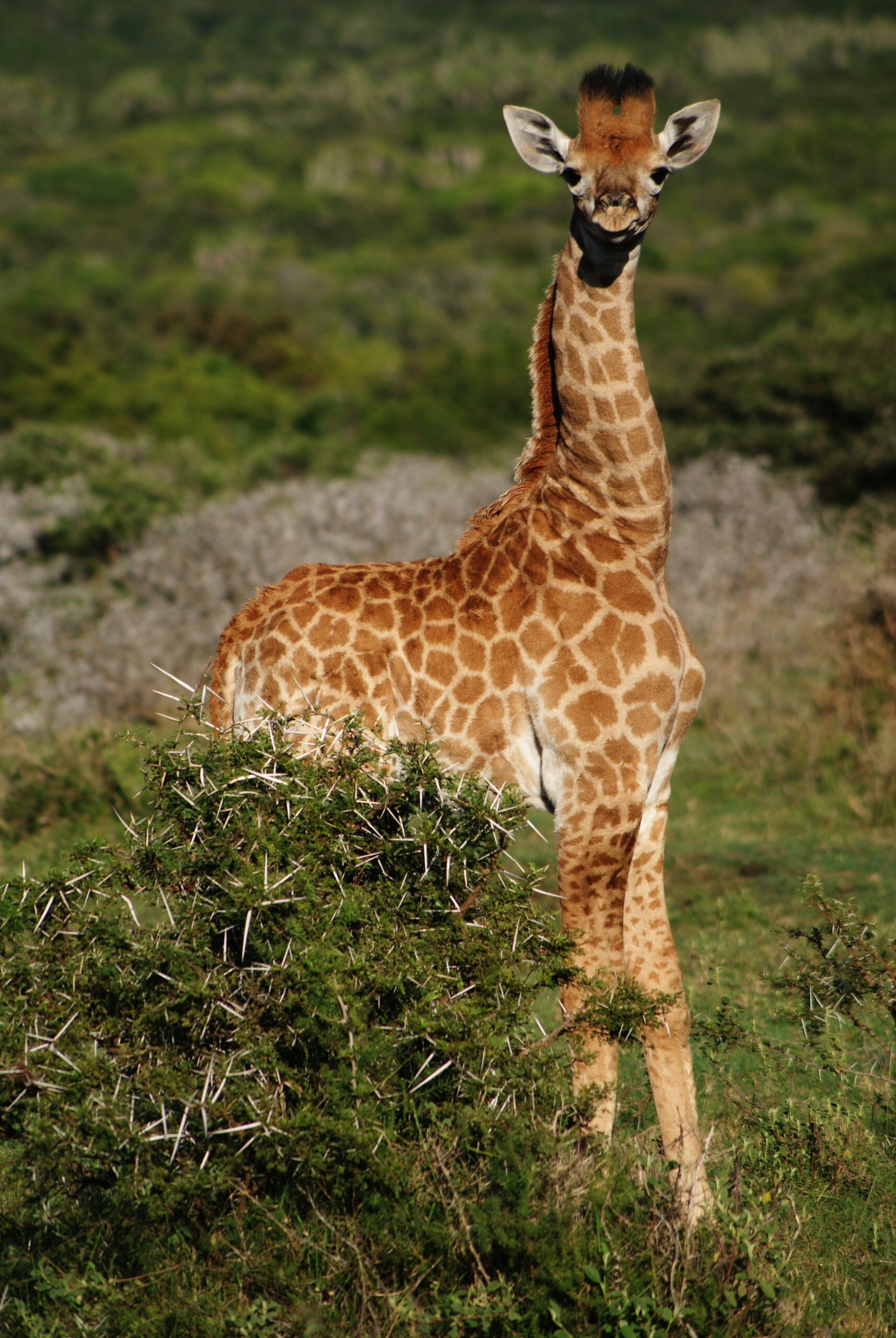
A giraffe cow is pregnant with her calf for 15 months. That’s 6 months longer than a typical human mother. When calves are born, they are already 6 feet tall (the height of a man) and weigh 100 to 150 pounds.
When a calf is born, it drops 6 feet to the ground! Luckily, this does not harm the baby, but rather, it causes the baby to take its first breaths.
Within an hour of being born, a baby giraffe is able to stand up and walk. This allows the calf to reach its mother to drink milk.
A calf can run within that first day after birth. They learn quickly so that they can run away from predators.
Adult males grow up to 18 feet tall and can weigh up to 3,000 pounds; adult females grow up to 14 feet tall and can weigh up to 1,500 pounds. Giraffes are considered adults at 4 to 5 years old.
Giraffe Family Life
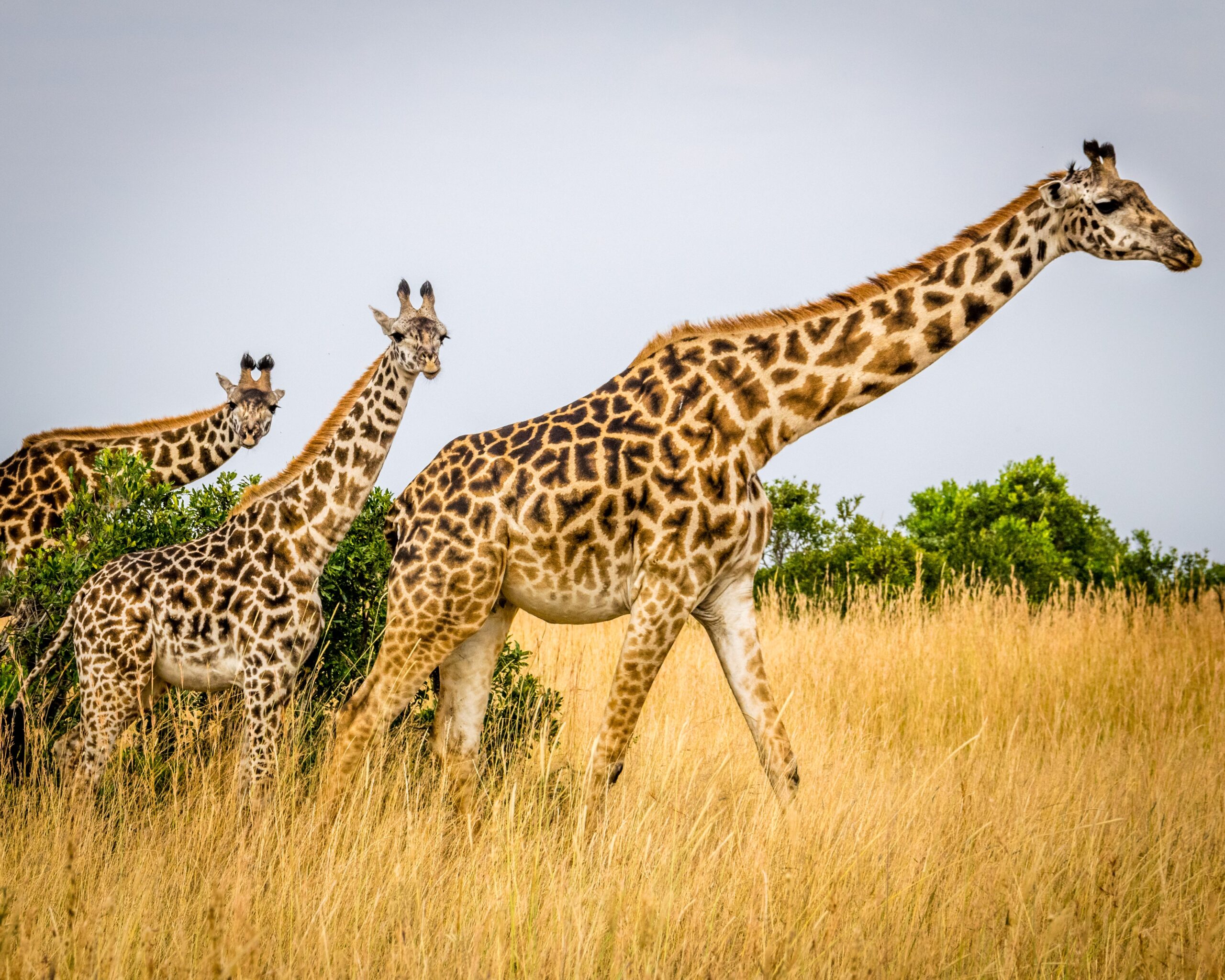
When calves are old enough, the cows will set up something like a group nursery where moms can drop off their babies so that they can go out to eat or meet up with friends.
Giraffes live in groups called towers, and they are very social animals. They do not have territories and are able to freely join or leave towers. Some towers have only bulls, some have only cows and their calves, and some are mixed.
Unique Features of Giraffes
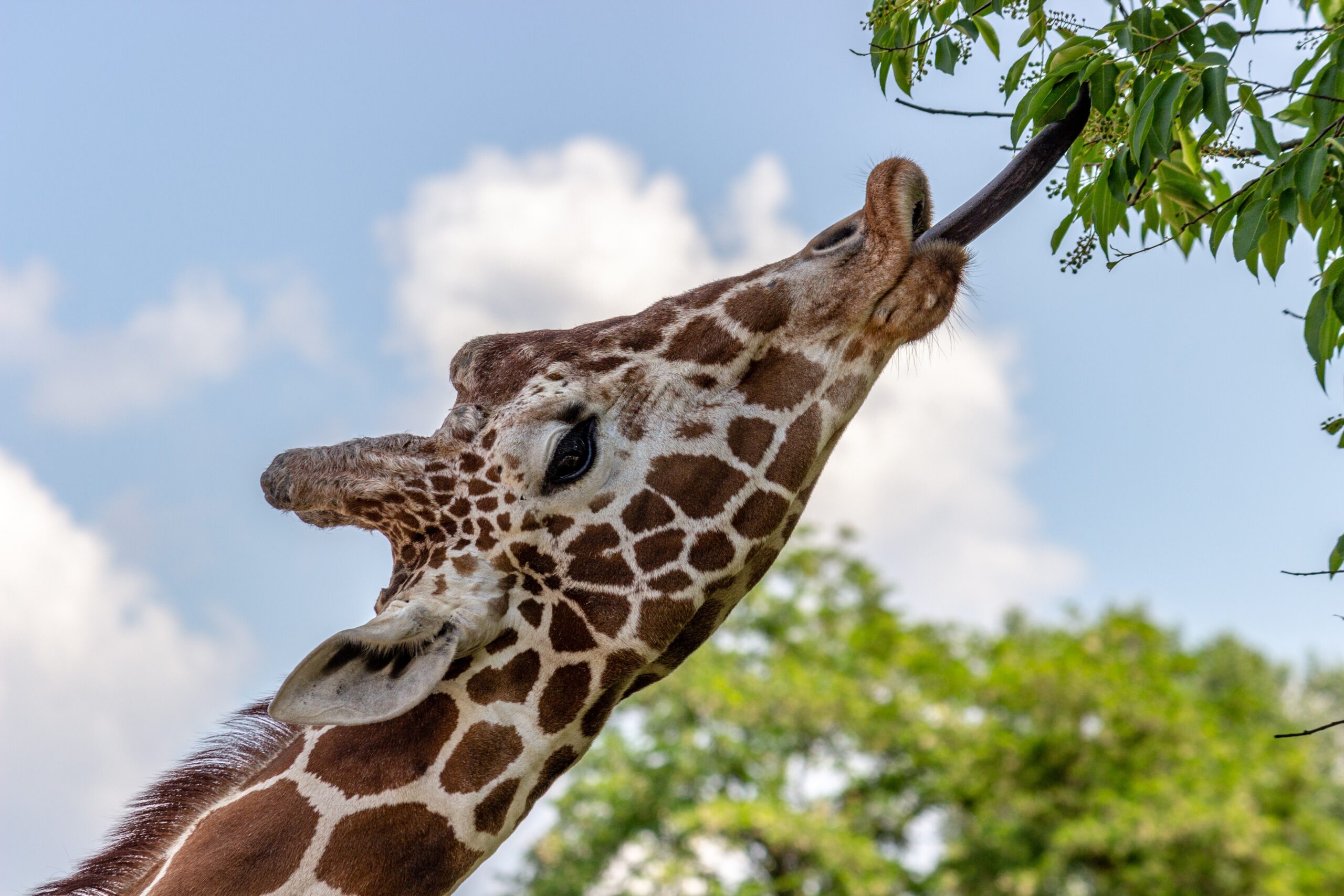
A giraffe’s neck has 7 vertebrae in it – the same as a human neck – except each one is 10 inches long (the length of an average washcloth).
A giraffe’s heart is 2 feet long (2 rulers long) and weighs 25 pounds (the weight of your 2-year-old brother).
Its tongue is 21 inches long (the length of a newborn human baby) and black to prevent sunburn when it munches leaves on the treetops.
Giraffe coat colors range from light tan to black depending on where they live and what they eat. There are 4 types of giraffes, and each giraffe’s coat is as unique as a human fingerprint.
Thanks for joining us and discovering more about giraffes! If you and your kids are hungry for more animal information, check out these other posts.
- Fun Butterfly Facts for Kids
- Ladybug Facts for Kids
- Spider Facts for Preschoolers
- Bear Facts for Kids
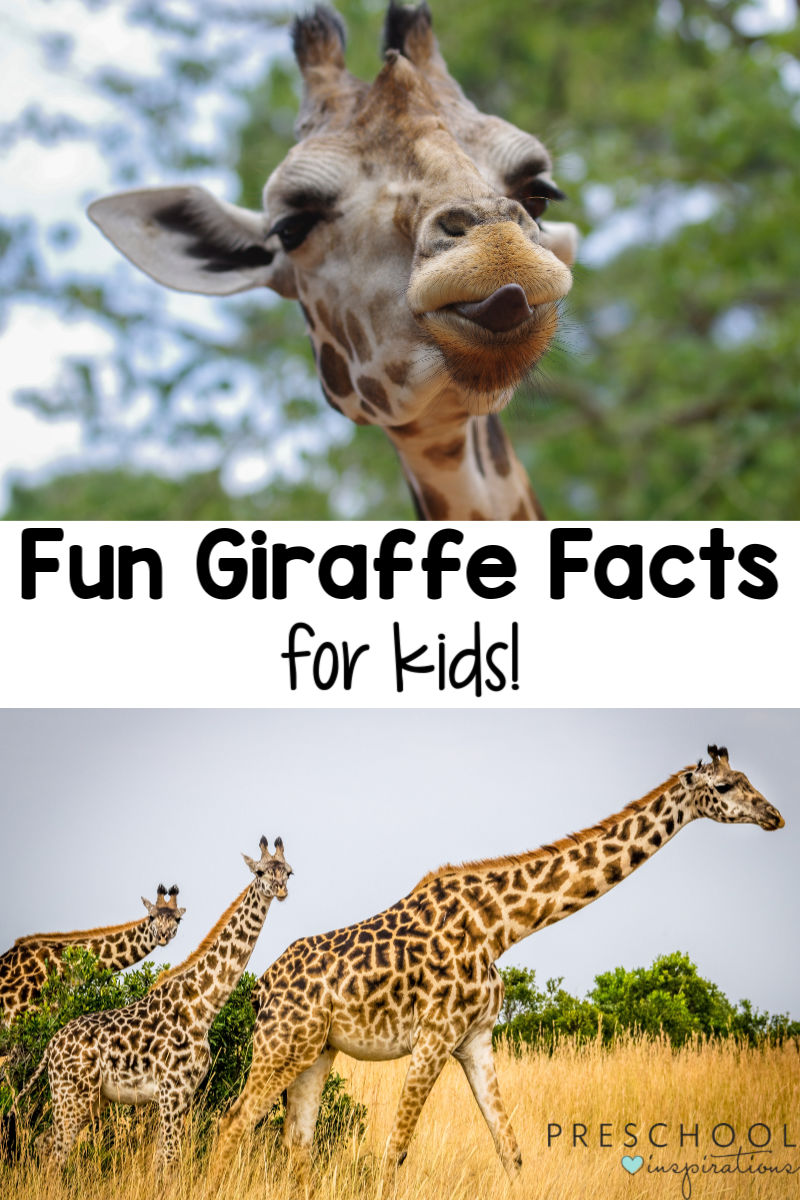
- Sloth Facts for Kids - April 12, 2021
- Giraffe Facts for Kids - July 6, 2020
- Bear Facts for Kids - June 27, 2020
Leave a Reply